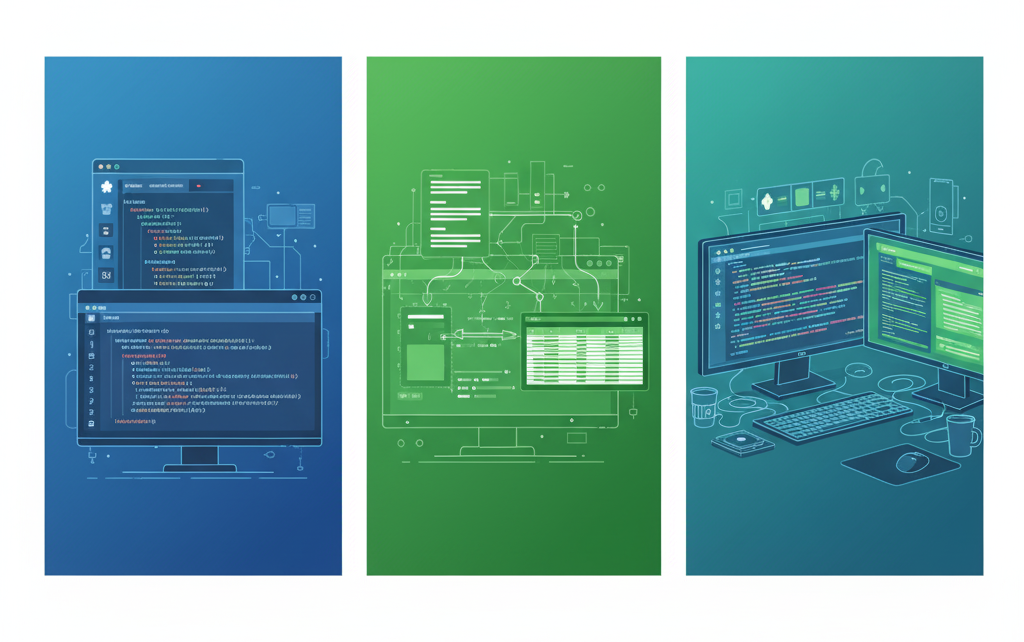
Web Scraping Frameworks Compared: Scrapy vs. BeautifulSoup vs. Puppeteer
Opening Perspective
In data-driven business environments, automation is often anchored by the ability to gather structured insights from unstructured web sources. Frameworks like Scrapy, BeautifulSoup, and Puppeteer have become essential tools for developers and product management consultants who focus on data extraction, enrichment, and integration.
At Product Siddha, these frameworks form the foundation of several automation projects, including a full-scale lead generation engine rebuilt after a major data provider restricted API access.
Understanding the Frameworks
Scrapy: The Powerhouse for Structured Crawling
Scrapy is designed for large-scale, production-level web scraping. It handles asynchronous requests, follows links, and stores structured data in databases or pipelines. Its architecture encourages modular design, allowing developers to create spiders that can crawl thousands of pages efficiently.
For Product Siddha’s internal automation systems, Scrapy has been used to power distributed scraping clusters. In one instance, Scrapy’s scheduling and throttling capabilities helped maintain compliance with website access limits while delivering continuous, real-time data.
Key strengths of Scrapy:
- Built-in support for crawling rules and pipelines
- Asynchronous I/O for high-speed extraction
- Easy integration with cloud-based scheduling
- Reliable error handling and retry mechanisms
Best suited for: Enterprises managing large-scale, repeatable scraping tasks that require clean, structured outputs.
BeautifulSoup: The Lightweight Parser
BeautifulSoup is simple, flexible, and ideal for projects that require HTML parsing rather than large-scale crawling. It works closely with Python’s requests library to fetch and clean web content. Developers often prefer BeautifulSoup for one-off or small batch extractions, quick data analysis, or educational projects.
At Product Siddha, BeautifulSoup often serves as a supporting parser within broader frameworks. For instance, in a product comparison dashboard project, BeautifulSoup was used to extract specific price and description fields from nested HTML elements after Scrapy retrieved the raw data.
Key strengths of BeautifulSoup:
- Excellent for parsing complex or broken HTML
- Minimal setup with clear syntax
- Ideal for quick data extraction and prototyping
Best suited for: Smaller or low-frequency scraping tasks, content parsing, and web data cleaning.
Puppeteer: The Browser-Based Extractor
Puppeteer operates differently from Scrapy and BeautifulSoup. It’s a headless Chrome automation library that interacts with web pages as a real user would. This makes it invaluable for scraping JavaScript-rendered sites that rely on dynamic loading.
For modern web architectures, Puppeteer provides a true browser context, enabling developers to capture user-generated data, screenshots, and complete DOM content. It is often integrated into Product Siddha’s MarTech automation solutions where pages are heavily dependent on scripts or user interactions.
Key strengths of Puppeteer:
- Handles dynamic, script-heavy sites with accuracy
- Enables visual rendering and screenshot capture
- Simulates user interactions like clicks and form submissions
Best suited for: Interactive or JavaScript-heavy applications, including ecommerce listings and SaaS platforms.
Real-World Application: Product Siddha’s Lead Engine Project
In 2025, Product Siddha faced a challenge when Apollo.io restricted access to its lead database, affecting several client automation pipelines. The team developed an internal Lead Engine using a hybrid scraping approach to rebuild a reliable data acquisition pipeline.
- Framework Choice: Scrapy was selected as the backbone for large-scale data crawling, handling parallel requests and ensuring continuous data retrieval.
- Parsing Layer: BeautifulSoup was integrated for fine-grained HTML parsing, cleaning messy data structures from multiple lead sources.
- Dynamic Pages: Puppeteer was deployed to scrape interactive sites where content loaded only after user actions.
This hybrid setup created a multi-framework ecosystem where each tool complemented the other. The result was a robust system capable of regenerating a high-quality contact database that powered CRM enrichment and outbound automation.
Today, this engine continues to support real-time business development operations, illustrating how framework diversity improves scalability and adaptability.
Performance Comparison Table
| Feature / Framework | Scrapy | BeautifulSoup | Puppeteer |
|---|---|---|---|
| Data Volume Handling | High | Low | Medium |
| JavaScript Rendering | Limited | None | Full |
| Speed and Efficiency | Excellent (Async) | Moderate | Slower (Browser-based) |
| Ease of Use | Moderate | High | Moderate |
| Best Use Case | Large-scale Crawling | HTML Parsing and Cleaning | Dynamic Site Scraping |
Choosing the Right Framework
The decision to use Scrapy, BeautifulSoup, or Puppeteer depends on the nature of your data sources, the volume of extraction, and the complexity of rendering required.
Product Siddha’s consultants often evaluate the following before recommending a framework:
- How dynamic is the website?
- How frequently must the data be updated?
- Does the project prioritize speed, depth, or visual accuracy?
A thoughtful combination often yields the best results. While Scrapy delivers raw power, BeautifulSoup offers simplicity, and Puppeteer provides realism. Together, they create a data ecosystem that mirrors modern digital environments.
Practical Insight from Product Siddha
Across projects involving MarTech automation, product intelligence, and lead generation, Product Siddha’s use of these frameworks has revealed a consistent truth – flexibility outperforms specialization. Teams that integrate multiple scraping tools achieve more resilient and maintainable systems, particularly when adapting to changing website architectures.
Closing Thoughts
Data extraction is not merely a technical task. It is a strategic practice that underpins automation, analytics, and decision-making.
At Product Siddha, each scraping framework represents a tool within a broader vision – enabling businesses to rebuild and strengthen their data pipelines when external sources become unreliable.
Whether developing an enterprise data engine or parsing a single structured dataset, the thoughtful use of Scrapy, BeautifulSoup, and Puppeteer reflects the discipline and adaptability that define successful digital transformation projects.
